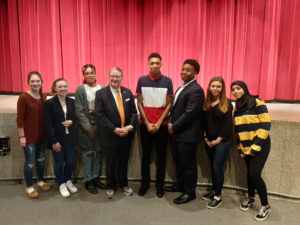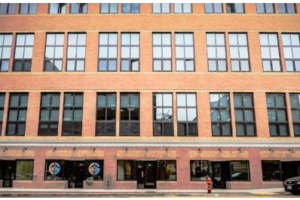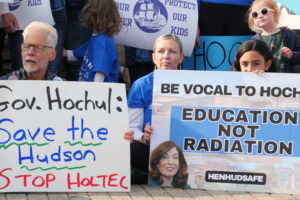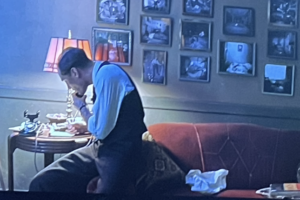Hate in the Age of Multiculturalism

As a youngster growing up in Somers, I had dozens of experiences where a friend or classmate, or I, was targeted because of religion or another personal characteristic.
I saw swastikas on every stop sign from my house to the school via the route I drove. I was told, “I hate Jews but you’re ok” by a classmate while we sat in the guidance counselor’s office. . I was invited to Sunday dinner at a classmate’s house and sat frozen as the adults around the table took turns telling jokes about Jews and Blacks.
In our senior group photo, two friends are behind me making the Nazi salute. While these are hateful actions, I’m not sure the people who committed them were fully aware of the effect their actions had on me (whether they were joking or not).
I watched as my black friend was violently pushed back and forth down a line of males as she came down the stairs between classes. I stood by unsure how to help classmates who were called a “fag” or “chink” or “spic.” And I had to find a way to make peace with the fact that my friends were either oblivious to what was happening or also didn’t know how to help.
It’s why this Martin Luther King, Jr. quote resonates so strongly with me:
“In the end, we will remember not the words of our enemies, but the silence of our friends.”
HOW CAN I BE OBJECTIVE?
With that as the backdrop, when RJN (River Journal North) asked me to cover a panel discussion titled “Hate in the Age of Multiculturalism,” hosted by state Sen. Peter Harckman, who represents District 40, I made no claim to being an objective observer.
This was the third event on the topic held by Senator Harckham, but the first time that he assembled a panel strictly of students. They talked freely and bravely about the challenges they face, in the hope of finding solutions, or, at the very least, new approaches to try.
Held in late February at Lakeland High School in Shrub Oak, N.Y., and moderated by Senator Harckham, the audience of more than 150 students and educators heard from seven students, including six seniors from Peekskill, Lakeland, and Walter Panas high schools, and an eighth grader from Mildred E. Strang Middle School in Yorktown Heights.
They reflected the diverse cultures of the 40th Senate District, including African-American, Latinx, Jewish, and Islamic, and LGBTQ.
MALE PRIVILEGE, JR.
We heard from a 16–year old boy who said he and his friends were turned away from a party because of their skin color. A Muslim student was called “terrorist” by a busload of middle schoolers and high schoolers. A young woman was threatened by two males at her camp, who said they were going to assault her. She could tell that they thought it was acceptable behavior.
As the room confronted how to combat hate, a few questions were asked. Is it the responsibility of the parents or the school? What is social media’s part in this? The answers amongst the panelists were not easy to come by. I know the feeling and the frustration.
Sometimes we’re raised with beliefs from our families. Sometimes our beliefs are totally different from what we’ve been told.
Take politics. There probably is at least one person in your family who doesn’t agree 100% with your point of view. As family and community members, we all have a responsibility to treat others as they would like to be treated, to coin a phrase, and to demonstrate that for our kids and with our kids.
SCHOOLS ON THE BALANCE BEAM
Schools face a formidable challenge in coming to grips with bigotry and the anti-social behavior that animates it. They can’t appear to take sides in a way that marginalizes any one group. Their role is to remain neutral for the most part, to sustain a sense of tradition to make some people happy, and to add curriculum or ideas that satisfy others.
Teachers need to appear neutral on hot-button issues, while not being deprived of adhering to their personal beliefs.
Some of social media is destructive and unproductive. Other times, it’s expanding my awareness and exposure to so much more out there, in a good way.
If that sounds complicated, and almost contradictory, that’s because it easily can be.
One of the commendable aspects of what Senator Harckham is trying to accomplish with these community forums is to encourage students – and adults – to talk and to listen to each another.
The panelists I witnessed were transparent, vulnerable, kind, and thoughtful in sharing their many ideas on how we mght make things better. The audience itself was full of diverse teens and adults who shared personal stories.
WHAT ABOUT ME?
A young male expressed frustration that he was not represented on the panel. Some lashed out in knee-jerk reaction about his being a white male (without actually knowing if that was 100% true). They said this was not his opportunity. Others acknowledged that he showed up to be a part of the discussion about inclusivity, pointing out the obvious irony of trying to justify the exclusion of someone like him.
Again, this is complicated.
All white males can not, and should not, be painted with the same broad brush, any more than stereotyping other groups should be tolerated. It’s easy to generalize and making assumptions about people we don’t even know. It’s easy to hate; it’s hard to understand.
In my professional life, I’ve participated in sensitivity training for Diversity & Inclusion at NBCUniversal.
We immersed ourselves in workshops, speaker series, cultural events and volunteerism. Through those groups, I learned about the challenges people face. I became more aware of how my reaction or passivity affected my life day to day.
EVERYBODY GET TOGETHER
If we applied that notion to local government and schools, it could be a powerful first step. Volunteers would own and run their individual groups with the guidance of the institution or government office.
In schools, the students could host a music event for Hispanic Heritage Month (cultural), a volunteer project like a coat drive (perhaps with a church, a temple, and a mosque), or a career day (where various industries are represented with executives and administrators of all colors, sexual orientation, religions and abilities). There could be a collaborative event that celebrates differences and raises money future school projects.
In local government, a town could throw cultural events like Lunar New Year, Divali, or Cinco de Mayo to shine a light on different traditions, bringing people together through food and customs.
MORE SAMENESS THAN DIFFERENCE
There could be charities that work in unison on a joint event. Smaller career development programs that are thoughtfully-crafted for different groups of people can help local businesses in many ways. Imagine a traditional community dinner that invites people of various political views who meet each other and find commonalities. Because those similarities do exist.
The bottom line is that there is a need to see and celebrate more diversity in leadership roles within our schools and towns. It means educators, coaches, town councils, chambers of commerce. It’s imperative to have different people in the room when decisions are made or ideas are generated to ensure a global point of view.
At the end of the day, every person (including this outstanding panel of students and the attendees in the room) wants to feel heard, equal, and safe.
Hate comes from fear, from misinformation and from a lack of interaction with others not exactly like you.
Who wants to burn energy fighting, hating, and feeling (or being) attacked. Better to wake up and feel peace, love, understanding.
We cannot undo what’s been done. We can only take small steps each day in listening to each other and doing our best to not reflexively judge. Myself included.
You may agree with me. Or you may think I’m Miss Mary Sunshine full of unicorns and rainbows. That’s your opinion, and I respect you for it.
More than 150 students and educators attended the February panel discussion hosted and moderated by N.Y. State Sen. Peter Harckham. Photo: Office of State Sen. Harckham /Tom Staudter
Teach Our Children Well
Sen. Harckham asked the student panel where the responsibility lay to teach tolerance, with parents or schools, or both?
Below is a sampling of comments by the student panelists…
- It’s difficult to answer. It should come from both places. Schools need to have a place where everybody can feel their culture/ethnicity is spoken for.
- Parents can help to a point. Teenagers are most likely to listen to an outside source. We crave not just academic education but cultural education.
- The teaching body needs to be more diverse, and they can speak about personal experiences that have left an impression. It’s not just about learning the statistics of cultural diversity.
- You can’t just talk about the bad things that happened (slavery, Holocaust, 9/11). You need to talk about the good things too. Iit desensitizes people if you focus only on the bad.
- Teachers and peers should not accept casual racism. Teachers are accustomed to hearing it and laughing. We have not gotten a lot of LGBTQ history, so I had to look that up on my own to learn about important events and milestones.
Gennifer Birnbach is a writer and brand marketing consultant with a background in Diversity & Inclusion. Instagram @genniferwithag.inc







Beautiful and heart-felt piece, Gennifer!
I’m impressed that Harckham was moderating ciivl tolerance talks as early as February. He’s a true ally to equality!